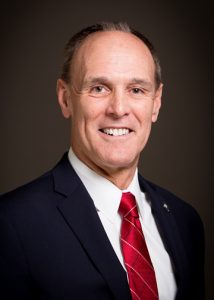Focus is to reach those who don’t have broadband, not just improve service to existing customers
By Autumn Shelton, WV Press Association
HUNTINGTON, W.Va. – State government’s plan to provide every West Virginia household with access to high-speed internet continues to move forward.
On Sunday, members of the legislative interim Joint Committee on Government and Finance heard from Mitch Carmichael, secretary of the Department of Economic Development, and Kelly Workman, director of the state’s Office of Broadband, about broadband deployment and expansion progress made to date, and future plans.
According to Carmichael, their focus is to “go to those who don’t have [broadband],” rather than increasing speeds or lowering prices for those who do, which has been a common complaint throughout the state.
“That’s the entire focus of our programs,” Carmichael said, adding that once the infrastructure is built, companies may then compete against each other for faster speeds and competitive prices for their customers.
He explained that funding for infrastructure goes to those “in the middle.”

Through awards from the West Virginia American Rescue Plan Act (ARPA) Broadband Investment Plan, 24 projects with over 3,000 miles of infrastructure were funded in 2022, Carmichael continued. Funding included $33 million in State and Local Fiscal Recovery Funds, $70 million in capital project funds, and $44 million in private investment.
At least 38,000 targeted locations will have the infrastructure that allows them to be connected to high-speed internet within 10 days of calling their local service provider, Carmichael added, noting that 350 connections have been completed in 2023 with about 120,000 new fiber-optic connections made in the last two years.
Additionally, Carmichael stated that the FCC Affordable Connectivity Program, which will provide certain low-income households with internet service discounts, is going to be promoted by his department, especially since many households that do have access to high-speed internet cannot afford the service.
“It’s a great program,” Carmichael stated.
Although work is being completed as quickly as possible, Carmichael did note that there have been some issues.
“Getting this stuff – connecting it to the existing pole infrastructure – is an impediment in the northern part of the state,” Carmichael said. “Those people that own those poles are not being forthcoming, and [our providers] are having difficulty connecting.”
He explained that the Public Service Commission recently held a hearing regarding this matter.
Workman added that this case, “Frontier West Virginia Inc., Monongahela Power Company and The Potomac Edison Company,” number 22-0885-T-E-SC, as well as permitting, supply chain issues, access to matching funds and access to capital funds are factors that impact broadband deployment.
Another factor that must be considered when being considered for federal funding is FCC Broadband mapping, Workman explained.
“Funding is dependent on this data,” she said. However, the FCC Broadband map has not always been exact when determining the number of locations in the state that do not have access to high-speed internet.
In the second version of the FCC Broadband map, Workman said they noted only 900,408 locations needed service, while the state noted that 1,094,284 did.
As a result, Workman said the state had to rely on a different mapping plan.
“Our office has gone through a painstaking exercise of mapping every location in West Virginia,” Workman said. “We are utilizing the state’s E911 address data.”
Yet, even with these hurdles, she stated that many projects should go to construction this year, especially considering that ARPA funds must be used by Dec. 2026.
Workman noted that funding for round two of the state’s LEAD (Line Extension Advancement and Development) Program, which provides for “extensions of existing last-mile cable modem and fiber-to-the-premise broadband networks,” includes 10 applicants, 40 projects, 27 counties, 144 communities, 26,204 addresses passed and 2,704 miles of new infrastructure.
The total project cost is $173 million with roughly $60 million in matching funds. The average cost of plant (infrastructure) per mile is $69,965, she said.
The second round of funding for the MBPS Program includes seven applicants, eight projects, 13,969 addresses passed and 910 miles of new infrastructure, Workman said, adding that the total cost of this project is $77 million with $27.5 in matching funds.
The average cost of plant per mile in this program is $84,464, she stated, noting that cost for new plant goes up in more rural areas
She also noted that GIGReady 2 has also completed its final round application process for funding, and that the five-year action plan for the Internet for All initiative, with funding provided through the federal bipartisan Infrastructure Investment and Jobs Act (IIJA), is currently in development and must be completed by August.
The act created two programs, the BEAD (Broadband Equity, Access and Deployment) Program and the Digital Equity Planning Grant Program, to provide high-speed internet to all Americans.
“We want to be ready for everything that’s coming under the infrastructure act,” Workman said.
In response to a question from Committee Chairman and Senate President Craig Blair, R-Berkeley, about 5G cellular networks, both Carmichael and Workman noted that the broadband cellular technology is dependent on fiber connections, but they do not monitor 5G networks.
However, “it’s coming,” Carmichael noted.
Workman concluded that they are monitoring service providers to ensure that all timetables for high-speed internet deployment are being met, and that “every penny” of ARPA funding will be utilized.
“We understand how West Virginians feel about previous federal funding utilized for broadband, and so we have done everything we can to ensure that that doesn’t happen again,” she concluded.
More information about the West Virginia Broadband Plan, and the FCC’s Affordable Connectivity Program, can be found at broadband.wv.gov.



